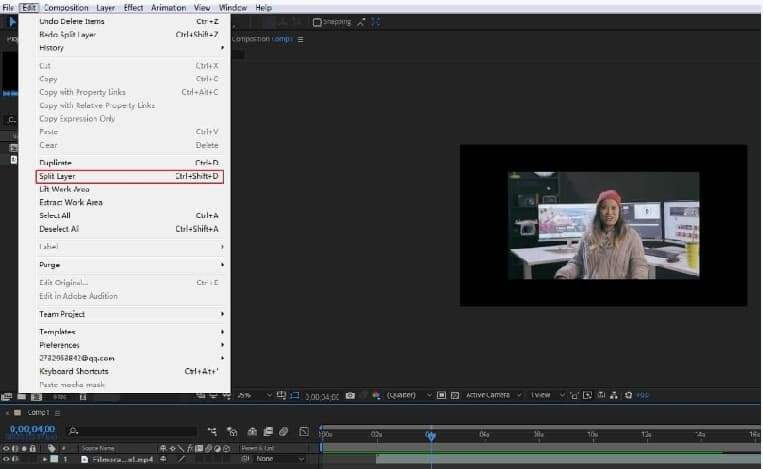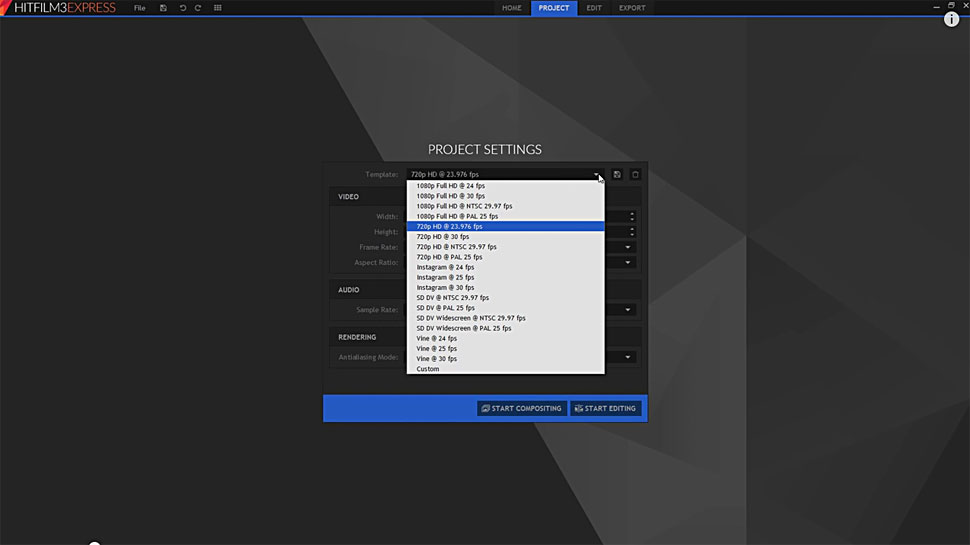


#Undo in hitfilm express series
This is a great way to instantly compare the state of the project before and after making a series of changes. You can continue to click in the action list to jump to different points. You can undo and redo one step at a time using the buttons at the bottom of the panel.Ĭlicking on an action in the list will revert instantly back to that state. The history panel shows a chronological list of all your actions, with your most recent at the bottom. HistoryĪ more powerful way to control your actions is to use the History panel. *If you undo several steps and then perform a new action, you will not then be able to redo back to your project’s earlier state. Hovering the mouse over the buttons will display the next action to be affected. You can also use the Ctrl+Z (undo) and Ctrl+Y (redo) shortcuts. This steps through your actions one at a time. You can undo and redo your actions using the undo/redo buttons at the top-left of the screen. Importing 3D Camera Tracking DataĮverything you do in HitFilm is logged, so that you can always undo any changes or mistakes, even over multiple steps. There are other alternatives out there and I have not tried them all but, from the reviews I have read, these are a good start. After you have used it for a while, you can decide if you need or want to move up to a more fully-featured program.
#Undo in hitfilm express free
If you have never used a video editor before, VideoPad is probably a good place to start - has a free version, fairly simple, does the basics.
#Undo in hitfilm express full
Has a nice Image Sequence option under the Import menu in the Media Bin (and the fact you have to - start a new project, go into Edit mode, go to the Media bin, click the arrow to show alternative import choices, and select Image Sequence - gives you some idea of the complexity of a full professional video editor). Professional: HitFilm 4 Express - more complicated, but very powerful with many more features. If you import media and select the first frame image in a sequence (according to the file names), it will ask you whether you want to import the entire sequence as a video clip, and will then handle the sequence like a video clip, which is rather nice. Intermediate: OpenShot is an open source video editor with some good features, not too complicated. The free edition and the cheap home edition are limited to only two audio tracks, or you can pay a bit more for a version with unlimited tracks. Look for the Get It Free paragraph and link for a free version for non-commercial home use (might not show up on all web browsers or on a second visit). Simple: VideoPad - has an option under File menu, Add Images As Video option for importing image sequences (and select the folder containing the FireAlpaca image sequence). Many other paid editors should also work well, although not all handle image sequences well - some import sequences as a slideshow by default, with about 5 or so seconds per image, not what you want for an animation. Personally, I am rather fond of Corel VideoStudio, a consumer-level paid product, has an import timelapse feature under the File menu (Insert Media) that works well with image sequences. To add sound to your animation, you are going to have to combine your frames into a true movie/video format (MP4, AVI, MOV, WMV, etc), using a video editor. It is basically an image format with some multi-image features bolted on. There are a few web sites that try to play an animated GIF and a sound file simultaneously, with varying success. No, the GIF format (from any program) cannot handle sound.


 0 kommentar(er)
0 kommentar(er)
